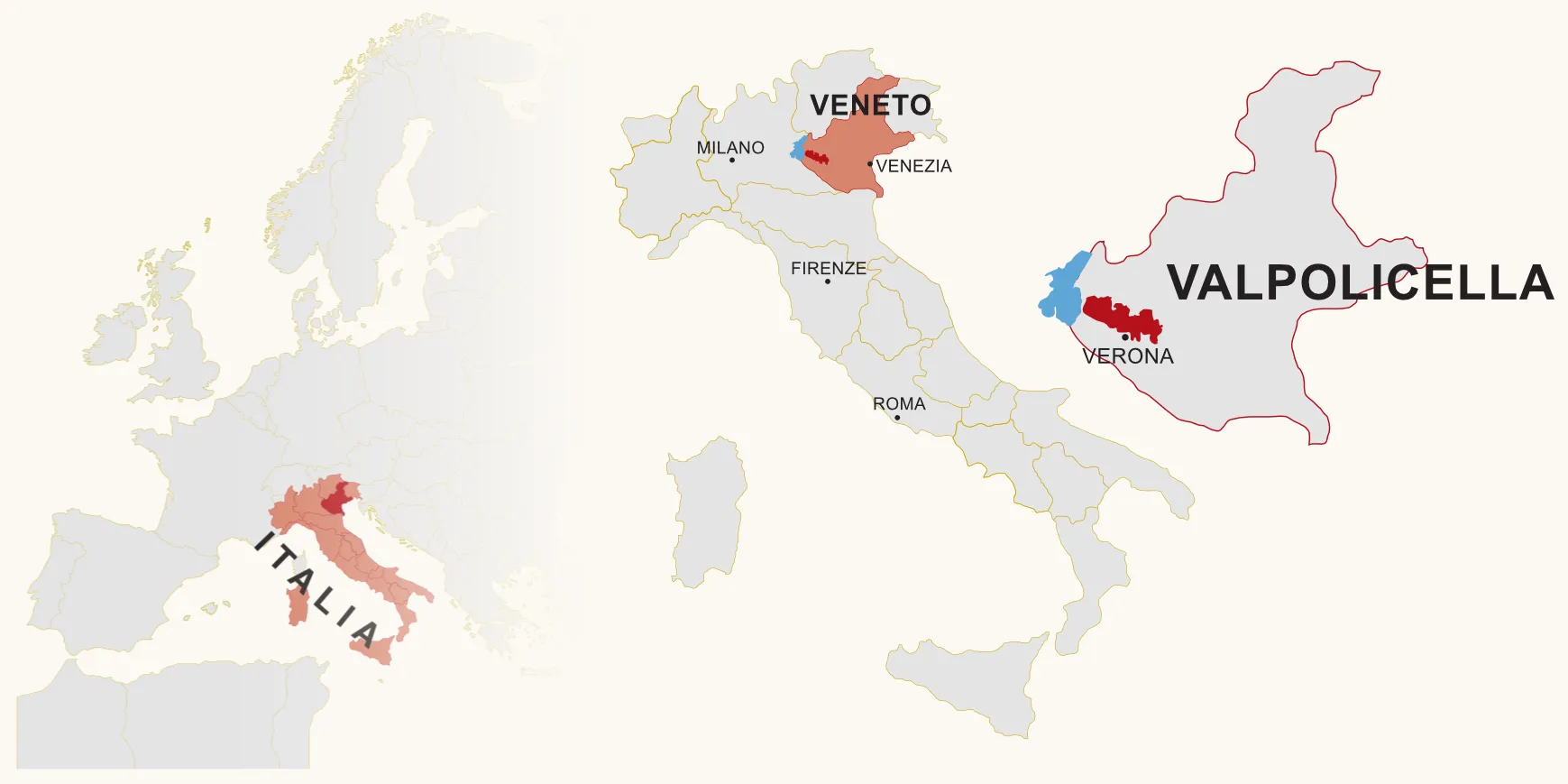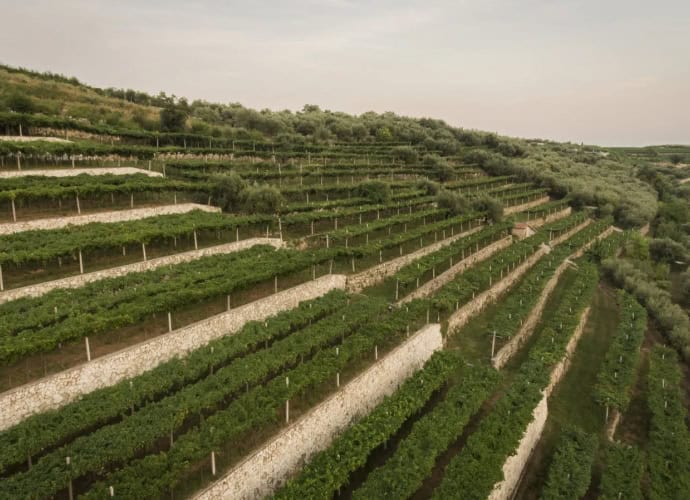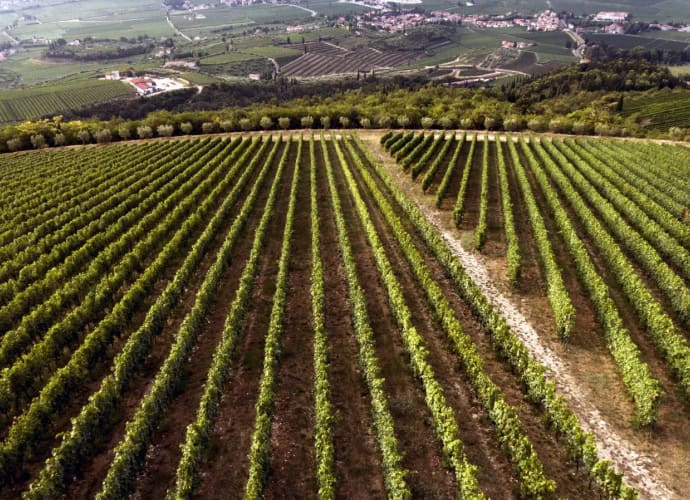The story of a life, in a vine

Tedeschi wines have become synonymous with terroir and Valpolicella across the world thanks to the constant and meticulous work carried out in our vineyards over the years. Tedeschi supports research and experimentation, critical instruments to guarantee quality production. The winery, forever respectful of the territory, is now sustainable and certified according to the standards of Biodiversity Friend and Equalitas. Nothing can be left to chance. The extremely careful attention to the vine also requires research to obtain a perfect interaction between the characteristics of land, microclimate, exposure, and the right choice of varietal and cultivation system.


Monte Olmi is the name of the vineyard acquired by Lorenzo Tedeschi in 1918 and located in Pedemonte in the community of San Pietro in Cariano in the heart of the Valpolicella Classica.
“Wine is a real value that conveys the surreal” affirmed Luigi Veronelli implying the privileged relationship between the quality of its structures, territory, humanity, wine, and art. There are places that have a magical effect on those who inhabit them because they express the essence and value of a passion.
The Monte Olmi is one of these. From the terraces exposed to the sun, we obtain the grapes of the precious Amarone Capitel Monte Olmi, a wine that since 1964, has projected this territory into the modern age of valuation of Cru wines at a time in which it was not even spoken of in Italy and continues to be recognizable for its timeless style and elegance

In the early 2000s, the Tedeschi family planted the La Fabriseria vineyard located in Le Pontare (between the communities of Sant’Ambrogio di Valpolicella and Fumane) in the Classica zone of Valpolicella.
There are two crosses in the vineyard, probably of Celtic origin, which signaled to pilgrims, who included Dante according to some narratives, the road to reach the sanctuary.
The name La Fabriseria comes from a popular Veronese tradition. At the beginning of the 20th century, La Fabriseria was the name of the village’s parish council that was tasked with the duty of managing the construction of the new Church. Grandfather Riccardo was also a Councilor/vestryman. The council meetings usually ended with a tasting of the best wine produced by the vestrymen known as fabbriceri.
We have borrowed from this ancient custom and have given the name La Fabriseria to two of our high-quality products: Amarone della Valpolicella Classico Riserva La Fabriseria and Valpolicella Classico Superiore La Fabriseria, made from the grapes of this vineyard.

Maternigo, which means “mother’s land” is the property acquired in 2006 in the DOC “denominazione di origine controllata” zone in Valpolicella between the communities of Tregnago and Mezzane di Sotto.
The property extends over 84 hectares and includes a building – probably of monastic origin, the oldest part of which dates back to the XV century – situated on a hill that dominates the background.
Today there are 34 hectares of vineyards and two hectares of olive groves in production, all surrounded by forest.
In the interior of the property, as a result of zonation studies, two vineyards have been identified for the production of two Cru wines: the Impervio vineyard, the name of which derives from the extremely steep incline, is perfect for the production of Valpolicella Superiore Maternigo, while the Barila parcel is particularly suited for the production of the Amarone della Valpolicella Riserva Maternigo Cru.